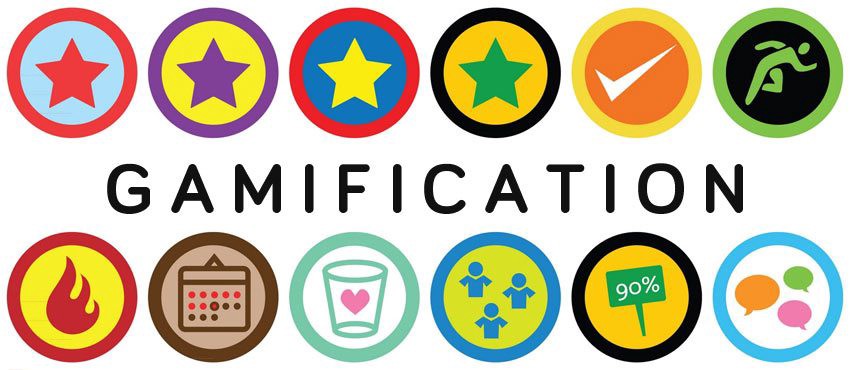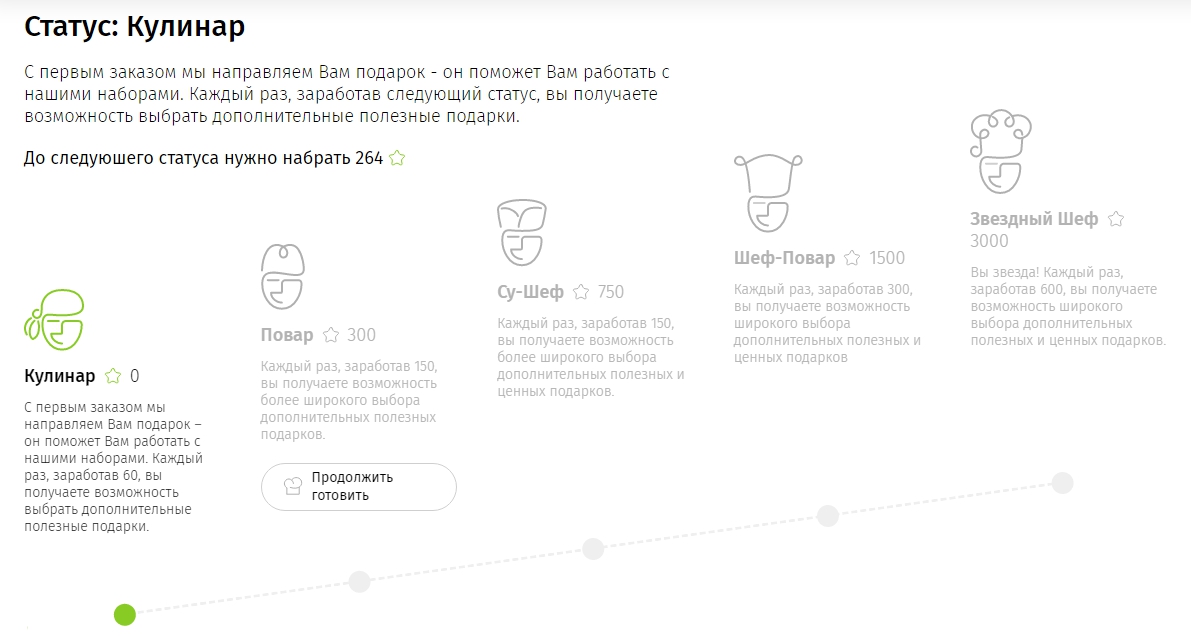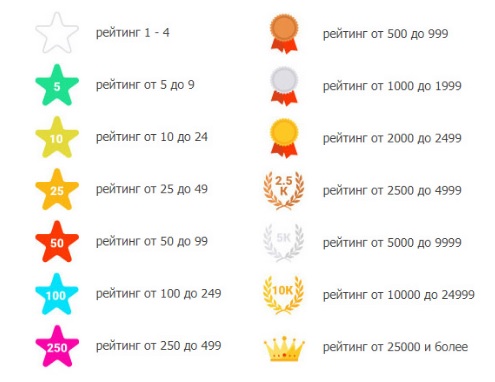Mechanics of gamification: rating
Rating. What is it and how to use it in gamification? The question seems simple, even rhetorical, but in reality such obvious mechanics have many nuances, including those caused by human evolution.

This article is the first of my series of articles on components, mechanics, and interesting examples of gamification. Therefore, some general terms I will give brief definitions. What is “gamification (gamification)”? Wikipedia defines: “the application of application-specific software and websites for computer games in non-game processes in order to attract users and consumers, increase their involvement in the solution of applied problems, the use of products and services”.
I prefer another option: “gamification - controlling the behavior of users of the system using game mechanics”. The difference between these definitions is that the system can be either a website or software, or a public park or transportation network. Gamification is applicable not only in the IT field. Further, some game mechanics are used to increase user engagement, some to attract users, but this is combined into a generalized concept of "behavior management." To implement gamification, it is important to know what users are doing in the system (they can do it if the system is not used yet), and what users should do from the point of view of the owners of the system. Gamification is useful for moving from “do” to “must do”.

Rating is a simple and popular game mechanic used in gamification. There is no precise definition of the term “game mechanics”; sometimes it is understood as anything from badges and achievements to behavioral impulses. Putting in order in the terminology used in gamification is a topic for a separate article, here I will confine myself to a brief explanation of what I mean by game mechanics. This is the lowest (most specific) design level of a gami ed system, the conventional Lego design cubes. Game mechanics are selected and applied when the upper, more abstract levels of gamification of the system are already thought out. Therefore, rating, badges, levels are game mechanics, and viral or group work is not.
Rating is a numerical or ordinal indicator reflecting the importance or significance of a particular object or phenomenon (definition from Wikipedia). The mechanics of the rating is connected with the mechanics of points and often with the mechanics of user levels. Rating without points is impossible - the system will not understand in what order to display users in the rating, rating without levels is possible.
Let's try to classify ratings by value for users of the system.
The ratings from the list above are combined in different ways within the system. In theory, a competitive user rating is possible, with intermediate winning situations, with a penalty of outsiders of the rating and a high level of status and trust for the leaders of the rating.
Another way to classify ratings is: only the system, only other users, or the system and users, according to who changes a user's rating. The option when the system only changes the user's rating is most common. It is often used in online games. The player performs various actions (kills monsters, completes quests), for which the system earns experience points (ranking). Other users do not affect the rating of the player in such a system. The variant, when the user’s rating is not changed by the system, but by other users of the system, is usually used together with a confidence rating. Examples: increase or decrease in karma, positive and negative feedback after transactions on trading floors. A combined version is also possible, for example in online questions.
The following method is based on a positive and negative change in user rating. I single out the conditional “rating plus”, “rating plus or minus positive”, “rating plus or minus negative” and “rating minus”. The first option, “rating plus”, means only an increase in the user's rating. This option is used, for example, for buyers at eBay auction. As a result of the transaction, the seller leaves the buyer only positive feedback or does not leave it at all. Yes, the fraudulent buyer may be blocked by the administration, but its rating cannot fall (until it sells itself poorly).
A rating of plus or minus positive means both an increase and a decrease in the rating of the user, while the rating does not fall below zero. Such a rating will not allow the user to fall too deep in the event of unsuccessful actions (and to know the power of an angry Habr). But at the same time, a new user and a user whose rating constantly fluctuates around the near-zero mark due to systematic “bad” actions will look the same visually, which is a bad influence on trust in the entire system.
A rating of plus or minus negative means that a user rating can either rise or fall to any value. In practice, there is no sense in a large negative rating and it is recommended to enter a negative threshold value in the system, after which penalties should be applied for such a user, up to blocking the account. At the same time, it is important to think about the situation of intentional “draining” the rating by other users, to exclude this possibility or make it difficult to be realized.

Rating minus is a rarely used mechanic, in which the initial rating of a user can either remain unchanged or decrease. I do not remember the projects that use such mechanics, but theoretically it is possible. For example, for projects or knockout games, or “recent heroes”.
When using the mechanics of the rating, it is necessary to avoid an important error: gaps in the number of points gained between users of the system (or between user levels) should not be demotivating, unattainable. Especially strongly this difference demotivates new users who see that they have zero points, and the leader of the rating has millions. Why is this happening, why does a new user in such a situation think that it is impossible to catch up with the leader? Firstly, new users of the system have not had time to spend enough time to understand the dynamics of scoring. Two or three million points of the leader of the rating may not be so unattainable, if for each user action the system adds thousands of points. The problem is that a demotivated new user stops using the system before he realizes it. Secondly,
We used to live among linear ordering of numbers. The numbering of houses, roulette and rulers, graphics and clocks - everywhere the numbers are located along the number line at equal intervals. It is obvious to us that the difference between 1 and 5 and between 5 and 10 is the same. The same difference between 1,500,000 and 1,500,505. In fact, the linear ordering of numbers is the result of the impact of our culture, not the ability from birth. Our distant ancestors, who lived tens of thousands of years ago, did not have a modern mathematical apparatus, and the numbers were taken logarithmically. That is, they located them on the numerical line more and more closely as they grow. They perceived numbers not in terms of exact values, but estimated-approximately. This was necessary with their lifestyle. When meeting with the enemies, it was necessary to quickly, therefore approximately, to assess who there are more - one’s own or someone else’s. Selection, from which tree to collect fruit, was also made on the basis of a rough estimate. Our ancestors did not calculate the exact values. The logarithmic scale also takes into account the laws of perspective and our perception of distance. For example, if we look at a tree, located at a distance of one hundred meters, and at another tree, located 100 meters behind the first, then the second one hundred meters seems shorter.

Playing white pieces in this picture does not need to know the exact number of black pieces in order to understand that his deeds are bad.
You can read more about the logarithmic perception of numbers, about the studies that confirm this theory, and about other interesting facts from the world of mathematics in the popular science book by Alex Bellos “Alex in the land of numbers. An extraordinary journey into the magical world of mathematics. ”
The logarithmic perception of numbers at the intuitive level is inherited by us. Hidden under the cultural layer, it manifests itself, for example, in the sense of time (in childhood, the years passed slowly, but now they just fly). We still, despite all education, get lost with very large numbers and instinctively switch to their logarithmic perception. We understand the difference between a liter and two liters of beer, but that ten billion, that one hundred billion liters of beer seem to us about the same numbers that fit into the concept of "very, very much beer." Therefore, there is a problem of feeling out of reach of the rating, if the gap between the current position and the leader is “very, very much” points. The user's brain will not intuitively analyze the situation, study the dynamics of points accumulation, calculate the time to reach the top of the rating. He will simply make a verdict - “this is a lot, it is not worth wasting energy”.
To avoid the situations described above, you need to apply the floating dynamics of rating points, in which the user receives rewards and score points at the beginning of the expected life cycle of using the system faster than in the middle and end. An example is World of Warcraft and similar MMORPGs with a “European” (and not “Korean”) character pumping system. The conventional European pumping system implies a quick passage through the initial levels of the game, followed by a gradual slowdown. The system used in typical Korean (and other Asian) games implies a sharp slowdown in the rate at which the character’s latest levels are received.
For example, in Lineage 2 to reach level 74, you need to gain 500,000 experience, for level 75 it is 560,000, for level 76 it is 623,000, for level 77 it is much more than 1,175,000, and to go from level 84 to maximum level 85 You will need to gain 270 million experience, while the speed of recruiting experience almost does not change (the entire table of experience and levels in Lineage 2 is available at this link ). Such a slowdown seems unnecessary in gamification, since it too demotivates users.

Another point to remember is that it is easier for the user to drop the game or the gamified system at the beginning, and it’s more difficult when he spent a lot of time in the system, after which the user will feel sorry for throwing points, levels and objects. Therefore, give new users a temporary bonus to points earned, for example, + 50% during the month. The bonus will serve as an additional incentive to use the system, for the duration of the bonus, the user will estimate the speed of scoring, become comfortable and more likely to continue using the system.
An example of a demotivating rating gap error is Gett Taxi. Until the last update, the loyalty program had twenty levels, for the maximum it was required 6000 points (for one trip an average of 20-30 points was given). All twenty levels were evenly distributed on a scale from 0 to 6000, in approximate accordance with the European system of pumping in online games. After the upgrade, three more levels were added to the application, at 10,000, 20,000, and 40,000 points, respectively, which is closer to the Korean system (considering that the number of points received per trip has not changed). I do not have a representative sample of the app users' opinion about this update, but eighteen of my friends and colleagues who use Gett Taxi, noted the demotivating effect of the new rating levels.

The gap between the three new and previous levels in the Gett Taxi loyalty program is unreasonably large and demotivating.
To avoid a demotivating gap in the rating, it is necessary, in addition to the global rating, to add local ratings to the system, where the gaps between the positions will not be so large.
Possible ways of dividing the global rating into local ones:
Combine the above methods with each other as you please, feel free to experiment with them.
During the operation of the gamified system, make sure that the rating meets the goals set when designing. For example, if the purpose of the rating was to increase the confidence of other users to users with a high rating, pay attention to finding and limiting possible honest and unfair ways to quickly increase the rating. The basis of the trust rating is the difficulty of obtaining it and the ability to lose it very quickly. If there are loopholes in the system for an unnecessarily rapid increase in the rating, the users' confidence in it will fall sharply. For example, if in an online auction there is an opportunity to raise the seller’s rating for each transaction made with each user, then two users can maintain their rating at a high level simply by buying penny goods (ideally digital) from each other.
In conclusion, I will give three more tips on the use of rating and levels:
In this article, I do not pretend to a comprehensive analysis of the possible use of mechanics rating, so some cases and use cases certainly did not mention. If you have an interesting experience of using ratings in games and gamified systems, share it with me and other readers.

This article is the first of my series of articles on components, mechanics, and interesting examples of gamification. Therefore, some general terms I will give brief definitions. What is “gamification (gamification)”? Wikipedia defines: “the application of application-specific software and websites for computer games in non-game processes in order to attract users and consumers, increase their involvement in the solution of applied problems, the use of products and services”.
I prefer another option: “gamification - controlling the behavior of users of the system using game mechanics”. The difference between these definitions is that the system can be either a website or software, or a public park or transportation network. Gamification is applicable not only in the IT field. Further, some game mechanics are used to increase user engagement, some to attract users, but this is combined into a generalized concept of "behavior management." To implement gamification, it is important to know what users are doing in the system (they can do it if the system is not used yet), and what users should do from the point of view of the owners of the system. Gamification is useful for moving from “do” to “must do”.

Rating is a simple and popular game mechanic used in gamification. There is no precise definition of the term “game mechanics”; sometimes it is understood as anything from badges and achievements to behavioral impulses. Putting in order in the terminology used in gamification is a topic for a separate article, here I will confine myself to a brief explanation of what I mean by game mechanics. This is the lowest (most specific) design level of a gami ed system, the conventional Lego design cubes. Game mechanics are selected and applied when the upper, more abstract levels of gamification of the system are already thought out. Therefore, rating, badges, levels are game mechanics, and viral or group work is not.
Rating is a numerical or ordinal indicator reflecting the importance or significance of a particular object or phenomenon (definition from Wikipedia). The mechanics of the rating is connected with the mechanics of points and often with the mechanics of user levels. Rating without points is impossible - the system will not understand in what order to display users in the rating, rating without levels is possible.
Let's try to classify ratings by value for users of the system.
- Competitive - encourages users to be higher in the ranking than other users. The most common rating.
- Determining a losing situation - the system imposes a penalty if the specified number of rating points is not dialed. Possible fine options: transfer to the previous group of rating, decrease in rank, defeat in a competition, cancellation of a certain amount of game currency, moral penalty (board of shame). It is used less often than an analogue with a winning situation, it requires careful thought-up before implementation and analysis of user behavior, because fines have a very negative impact on the user and can greatly reduce motivation.
- The definition of a winning situation - gives the right to reward for achieving a given number of rating points. For the first places in the ranking, for intermediate stages. As a reward, the same options are used as in penalties in a losing situation, but with a plus sign. Awards for intermediate stages in the rankings are an interesting but rare practice that allows the user to slowly lose enthusiasm in the process of transition from level to level. An example is the rating of the old version of Shefmarket. This is a home delivery service for products with recipes for self-preparation. Each client in the personal account displays the status, points are awarded for cooked dishes, levels are awarded for points, but to reach the next level you need to prepare dozens of dishes, and this can demotivate.

Rating of Chefmarket. Pay attention to how other game mechanics are organically used: badges, progress bar, titles packed in a nice-looking interface. - Status - increases the credibility of the user with a high rating in the eyes of other users. Used, for example, in projects of online questions (StackOverflow, Answers@Mail.Ru). The MMR systems (player selection ratings) in MOBA games can also be attributed to the status rating.
- Trustee - increases the credibility of the user with a high rating in the eyes of other users. Has become the standard for online auctions. The karma of Habr users is another example of a trust rating. The confidence rating is used in systems based on the interaction of users with each other, especially if this interaction is offline or involves the exchange of services and goods.

An example of an online auction ranking with badges issued when a certain rating level is reached.
The ratings from the list above are combined in different ways within the system. In theory, a competitive user rating is possible, with intermediate winning situations, with a penalty of outsiders of the rating and a high level of status and trust for the leaders of the rating.
Another way to classify ratings is: only the system, only other users, or the system and users, according to who changes a user's rating. The option when the system only changes the user's rating is most common. It is often used in online games. The player performs various actions (kills monsters, completes quests), for which the system earns experience points (ranking). Other users do not affect the rating of the player in such a system. The variant, when the user’s rating is not changed by the system, but by other users of the system, is usually used together with a confidence rating. Examples: increase or decrease in karma, positive and negative feedback after transactions on trading floors. A combined version is also possible, for example in online questions.
The following method is based on a positive and negative change in user rating. I single out the conditional “rating plus”, “rating plus or minus positive”, “rating plus or minus negative” and “rating minus”. The first option, “rating plus”, means only an increase in the user's rating. This option is used, for example, for buyers at eBay auction. As a result of the transaction, the seller leaves the buyer only positive feedback or does not leave it at all. Yes, the fraudulent buyer may be blocked by the administration, but its rating cannot fall (until it sells itself poorly).
A rating of plus or minus positive means both an increase and a decrease in the rating of the user, while the rating does not fall below zero. Such a rating will not allow the user to fall too deep in the event of unsuccessful actions (and to know the power of an angry Habr). But at the same time, a new user and a user whose rating constantly fluctuates around the near-zero mark due to systematic “bad” actions will look the same visually, which is a bad influence on trust in the entire system.
A rating of plus or minus negative means that a user rating can either rise or fall to any value. In practice, there is no sense in a large negative rating and it is recommended to enter a negative threshold value in the system, after which penalties should be applied for such a user, up to blocking the account. At the same time, it is important to think about the situation of intentional “draining” the rating by other users, to exclude this possibility or make it difficult to be realized.

Rating minus is a rarely used mechanic, in which the initial rating of a user can either remain unchanged or decrease. I do not remember the projects that use such mechanics, but theoretically it is possible. For example, for projects or knockout games, or “recent heroes”.
When using the mechanics of the rating, it is necessary to avoid an important error: gaps in the number of points gained between users of the system (or between user levels) should not be demotivating, unattainable. Especially strongly this difference demotivates new users who see that they have zero points, and the leader of the rating has millions. Why is this happening, why does a new user in such a situation think that it is impossible to catch up with the leader? Firstly, new users of the system have not had time to spend enough time to understand the dynamics of scoring. Two or three million points of the leader of the rating may not be so unattainable, if for each user action the system adds thousands of points. The problem is that a demotivated new user stops using the system before he realizes it. Secondly,
We used to live among linear ordering of numbers. The numbering of houses, roulette and rulers, graphics and clocks - everywhere the numbers are located along the number line at equal intervals. It is obvious to us that the difference between 1 and 5 and between 5 and 10 is the same. The same difference between 1,500,000 and 1,500,505. In fact, the linear ordering of numbers is the result of the impact of our culture, not the ability from birth. Our distant ancestors, who lived tens of thousands of years ago, did not have a modern mathematical apparatus, and the numbers were taken logarithmically. That is, they located them on the numerical line more and more closely as they grow. They perceived numbers not in terms of exact values, but estimated-approximately. This was necessary with their lifestyle. When meeting with the enemies, it was necessary to quickly, therefore approximately, to assess who there are more - one’s own or someone else’s. Selection, from which tree to collect fruit, was also made on the basis of a rough estimate. Our ancestors did not calculate the exact values. The logarithmic scale also takes into account the laws of perspective and our perception of distance. For example, if we look at a tree, located at a distance of one hundred meters, and at another tree, located 100 meters behind the first, then the second one hundred meters seems shorter.

Playing white pieces in this picture does not need to know the exact number of black pieces in order to understand that his deeds are bad.
You can read more about the logarithmic perception of numbers, about the studies that confirm this theory, and about other interesting facts from the world of mathematics in the popular science book by Alex Bellos “Alex in the land of numbers. An extraordinary journey into the magical world of mathematics. ”
The logarithmic perception of numbers at the intuitive level is inherited by us. Hidden under the cultural layer, it manifests itself, for example, in the sense of time (in childhood, the years passed slowly, but now they just fly). We still, despite all education, get lost with very large numbers and instinctively switch to their logarithmic perception. We understand the difference between a liter and two liters of beer, but that ten billion, that one hundred billion liters of beer seem to us about the same numbers that fit into the concept of "very, very much beer." Therefore, there is a problem of feeling out of reach of the rating, if the gap between the current position and the leader is “very, very much” points. The user's brain will not intuitively analyze the situation, study the dynamics of points accumulation, calculate the time to reach the top of the rating. He will simply make a verdict - “this is a lot, it is not worth wasting energy”.
To avoid the situations described above, you need to apply the floating dynamics of rating points, in which the user receives rewards and score points at the beginning of the expected life cycle of using the system faster than in the middle and end. An example is World of Warcraft and similar MMORPGs with a “European” (and not “Korean”) character pumping system. The conventional European pumping system implies a quick passage through the initial levels of the game, followed by a gradual slowdown. The system used in typical Korean (and other Asian) games implies a sharp slowdown in the rate at which the character’s latest levels are received.
For example, in Lineage 2 to reach level 74, you need to gain 500,000 experience, for level 75 it is 560,000, for level 76 it is 623,000, for level 77 it is much more than 1,175,000, and to go from level 84 to maximum level 85 You will need to gain 270 million experience, while the speed of recruiting experience almost does not change (the entire table of experience and levels in Lineage 2 is available at this link ). Such a slowdown seems unnecessary in gamification, since it too demotivates users.

Another point to remember is that it is easier for the user to drop the game or the gamified system at the beginning, and it’s more difficult when he spent a lot of time in the system, after which the user will feel sorry for throwing points, levels and objects. Therefore, give new users a temporary bonus to points earned, for example, + 50% during the month. The bonus will serve as an additional incentive to use the system, for the duration of the bonus, the user will estimate the speed of scoring, become comfortable and more likely to continue using the system.
An example of a demotivating rating gap error is Gett Taxi. Until the last update, the loyalty program had twenty levels, for the maximum it was required 6000 points (for one trip an average of 20-30 points was given). All twenty levels were evenly distributed on a scale from 0 to 6000, in approximate accordance with the European system of pumping in online games. After the upgrade, three more levels were added to the application, at 10,000, 20,000, and 40,000 points, respectively, which is closer to the Korean system (considering that the number of points received per trip has not changed). I do not have a representative sample of the app users' opinion about this update, but eighteen of my friends and colleagues who use Gett Taxi, noted the demotivating effect of the new rating levels.

The gap between the three new and previous levels in the Gett Taxi loyalty program is unreasonably large and demotivating.
To avoid a demotivating gap in the rating, it is necessary, in addition to the global rating, to add local ratings to the system, where the gaps between the positions will not be so large.
Possible ways of dividing the global rating into local ones:
- Between friends. Shows a rating consisting only of the user's friends. People love to compete not with an unknown rival, of which only a nickname is known (such an opponent is not much different from a bot), but with friends and acquaintances.
- By the time. Rating gained for a certain amount of time (day, week, month, year). Good zeroing and replayability. I couldn’t win this week - I’ll try the next one, and the gap between users from each other is regularly reset to zero and does not grow to cosmic values.
- By geotargeting. Rating that shows only users from a specific region (district, city, country, continent). Just in such a situation, Guy Julius Caesar said, driving through a poor barbarian town: “it is better to be the first here than the second in Rome”.
- According to the floor. Then compare the results of men and women, playing on Hipovic feminist and chauvinistic motifs (use caution, there may be flows of hatred and feces on both sides).
- By age groups. For example, in gamification of near-sports systems and systems that require skills that change in a person with age. For example, projects that motivate people to play sports, allowing them to upload their results and see the results of other users. It is clear that a person of 65 years will find it much more difficult to run as much as a twenty-year-old has run, and competing with his peers will be much more interesting. An example from the other side is online chess and other complex intellectual games in which an experienced grandmaster will be unattainable for a fourteen-year-old.
- According to other data about users that are available in the system (rating only for drivers of Mercedes, only for plumbers, only for the legal department, only for elves of level 120).
Combine the above methods with each other as you please, feel free to experiment with them.
During the operation of the gamified system, make sure that the rating meets the goals set when designing. For example, if the purpose of the rating was to increase the confidence of other users to users with a high rating, pay attention to finding and limiting possible honest and unfair ways to quickly increase the rating. The basis of the trust rating is the difficulty of obtaining it and the ability to lose it very quickly. If there are loopholes in the system for an unnecessarily rapid increase in the rating, the users' confidence in it will fall sharply. For example, if in an online auction there is an opportunity to raise the seller’s rating for each transaction made with each user, then two users can maintain their rating at a high level simply by buying penny goods (ideally digital) from each other.
In conclusion, I will give three more tips on the use of rating and levels:
- Do not show the user the number of points needed on subsequent levels. This demoralizes newbies who do not yet know the speed of scoring in the system and the possibilities for scoring. When the user sees that the first level is reached for 10 points, the second for 20, and the twentieth - for a hundred thousand, it demotivates. One hundred thousand seems unattainable number.
- The number of points required to the next level, show with the accumulated. The user scored 10 points, moved to the second level, and before reaching the third level there were 20 points left. Do not show the user's progress as 0 out of 20, better show how 10 out of 30. Create the illusion of an unfinished task, our brain does not like unfinished tasks and seeks to finish them. So the progress bars mechanics work, this principle is appropriate in our case. Logarithmic thinking here is also at hand. When we see that we have gained 450 out of 500 experience points, it seems to us that this task is almost complete.
- Remind the user of successes in various ratings of the system (after all, the user himself may not guess that this week he is in the top three among the men of his district).
In this article, I do not pretend to a comprehensive analysis of the possible use of mechanics rating, so some cases and use cases certainly did not mention. If you have an interesting experience of using ratings in games and gamified systems, share it with me and other readers.
